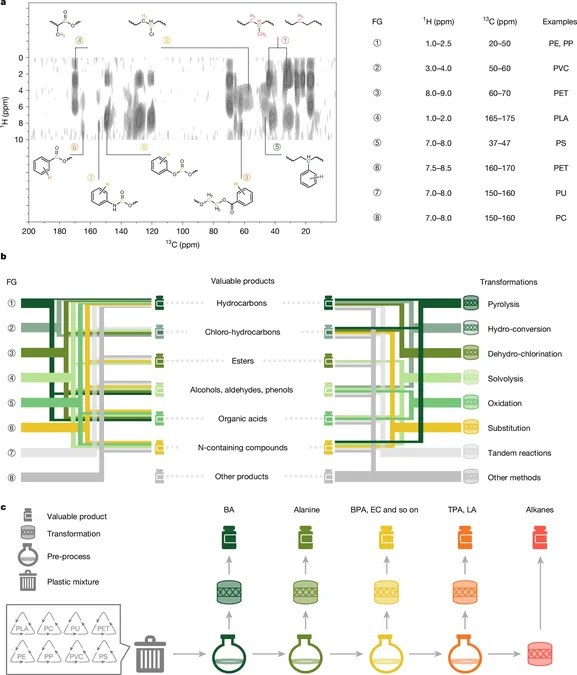
Revolutionizing Plastic Recycling: How Groundbreaking NMR Technology Is Changing the Game
2025-06-26
Author: Jia
The Plastic Waste Crisis: A Growing Threat to Our Planet
The ever-increasing mountain of plastic waste is not just unsightly; it threatens wildlife, ecosystems, and our very health. As this crisis continues to escalate, finding innovative solutions is more crucial than ever.
Catalytic Processes: A Beacon of Hope
Among the most promising strategies are catalytic processes that transform unwanted plastic into valuable chemicals and fuels. However, the task is complicated by the diverse and complex composition of real-life plastic waste, necessitating a thorough understanding of its individual components for successful recycling.
A Breakthrough in NMR Technology
In a groundbreaking study highlighted in the prestigious journal Nature, a team led by Prof. Xu Shutao at the Dalian Institute of Chemical Physics has developed a pioneering solid-state nuclear magnetic resonance (NMR) technology aimed specifically at analyzing plastic waste mixtures. This collaboration with experts from Peking University marks a significant leap in tackling the plastic pollution crisis.
Harnessing the Power of Solid-State NMR
Solid-state NMR spectroscopy stands out for its ability to directly analyze complex, insoluble samples, making it incredibly effective for the intricate world of polymers. The research team employed an advanced method known as Frequency Switched Lee Goldburg Heteronuclear Correlation (FSLG-HETCOR) NMR, optimizing parameters to yield exceptional data.
Unlocking High-Resolution 'Fingerprints'
Using 13C-labeled tyrosine hydrochloride as a reference, the researchers achieved astonishingly high-resolution 'fingerprint' spectra that distinguished individual components from a mixture containing diverse plastics like polystyrene, polylactic acid, and polypropylene. This technological leap allows for a clearer picture of the functional groups present in plastic waste.
Real-Time Tracking of Chemical Transformations
Remarkably, the NMR method facilitated real-time monitoring of the entire catalytic separation process, from chaotic waste to high-value chemical products. This level of precision is revolutionary, enabling researchers to understand how plastics evolve during transformation.
A Guiding Eye for Recycling Processes
"Solid-state NMR serves as a 'guiding eye' for the separation and catalytic transformation of plastic waste," says Prof. Xu. This innovation not only aids in determining the individual components within waste mixtures but also sets the stage for refining and integrating existing recycling processes into a comprehensive solution for plastic pollution.
Towards Scalable Industrial Solutions
This trailblazing research lays the groundwork for effective separation and transformation strategies critical for large-scale industrial applications. As we continue to grapple with the plastic crisis, such technological advancements offer much-needed hope for a cleaner, more sustainable future.



 Brasil (PT)
Brasil (PT)
 Canada (EN)
Canada (EN)
 Chile (ES)
Chile (ES)
 Česko (CS)
Česko (CS)
 대한민국 (KO)
대한민국 (KO)
 España (ES)
España (ES)
 France (FR)
France (FR)
 Hong Kong (EN)
Hong Kong (EN)
 Italia (IT)
Italia (IT)
 日本 (JA)
日本 (JA)
 Magyarország (HU)
Magyarország (HU)
 Norge (NO)
Norge (NO)
 Polska (PL)
Polska (PL)
 Schweiz (DE)
Schweiz (DE)
 Singapore (EN)
Singapore (EN)
 Sverige (SV)
Sverige (SV)
 Suomi (FI)
Suomi (FI)
 Türkiye (TR)
Türkiye (TR)
 الإمارات العربية المتحدة (AR)
الإمارات العربية المتحدة (AR)